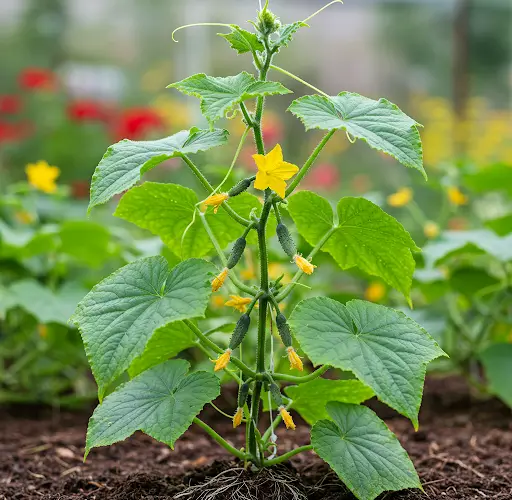How to Boost Cucumber Yields with Pinching and a Homemade Yeast-Based Fertilizer
Cucumber plants are among the most productive and rewarding vegetables to grow in the home garden. However, once these vigorous vines reach a height of 2 to 3 feet—or even taller—they require specific care to continue thriving and producing high-quality fruits. At this stage, two critical practices can dramatically enhance plant health and increase yields: pinching the growing tips and applying a nutrient-rich dressing made with yeast.
Why Pinching Matters
Cucumbers, like many fruiting vegetables, tend to grow vertically with a dominant main stem. If left untrained or unpruned, the plant can become tall and lanky, often at the expense of side shoot development and fruit production. One effective way to counter this is to pinch or cut off the top of the main stem once the plant reaches about 2 to 3 feet in height.
This simple technique redirects the plant’s energy from vertical growth to lateral shoot development. Within just a few days of pinching the main stem, you’ll notice an increase in the growth of side shoots. These additional branches produce more flowers and, ultimately, more fruits. Instead of relying on a single central vine, the plant transforms into a fuller, bushier structure with a greater potential yield.
Not only does pinching increase the number of fruit-bearing stems, but it also helps the plant better utilize space, reduces the risk of stem breakage under the weight of fruit, and promotes better air circulation, which helps prevent disease.
The Role of a Nutrient-Rich Yeast Dressing
While pruning helps shape the plant and encourage more growth points, feeding the plant with the right nutrients is equally important. At this stage of development, cucumber plants benefit greatly from a specialized liquid dressing that supplies a quick boost of essential nutrients. One particularly effective option is a homemade dressing made using yeast.
This dressing provides a fast-acting source of nitrogen—critical for lush foliage growth and energy production through photosynthesis. It also contributes to improved root development and nutrient absorption, resulting in stronger, healthier plants that are more resilient to environmental stressors. With consistent use, this natural fertilizer supports vigorous vegetative growth and enhances flowering and fruiting, leading to increased yields and better-quality cucumbers.
How to Make the Yeast-Based Fertilizer
Preparing this fertilizer is straightforward, requiring only a few common ingredients and a short waiting time. Here’s how you can make it at home:
Ingredients:
-
10 liters of warm water
-
20 grams of active dry yeast
-
A handful of sugar (approximately 2–3 tablespoons)
Instructions:
-
Prepare the Solution
In a large container (a bucket or jar, depending on your garden size), pour 10 liters of warm—not hot—water. The water should be warm enough to activate the yeast but not so hot that it kills the microorganisms. -
Add Yeast and Sugar
Sprinkle 20 grams of yeast into the water and add a handful of sugar. The sugar acts as a food source for the yeast, stimulating rapid fermentation and the growth of beneficial microorganisms. -
Allow to Activate
Stir the mixture well and allow it to rest for 1 to 2 hours in a warm place. This gives the yeast time to activate and begin the fermentation process, releasing nutrients and beneficial compounds into the solution. -
Use Immediately
Once the solution is ready, use it right away to water the base of your cucumber plants. Avoid letting the solution sit for too long after fermentation, as the microbial activity may diminish over time. Always prepare fresh batches as needed.
This yeast-based dressing not only feeds the plants quickly but also helps stimulate soil microbial activity, creating a healthier growing environment for cucumbers and other vegetables.
Don’t Forget the Basics: Compost and Manure
While this liquid fertilizer is highly effective during the growing season, it’s important to remember that yeast alone is not sufficient for long-term soil fertility. At the beginning of the season, always prepare your garden beds with generous amounts of compost or well-rotted manure. These organic materials provide a balanced, slow-release source of nutrients that create the ideal foundation for cucumber growth.
Combined with regular applications of the yeast-based dressing, compost and manure ensure your plants have everything they need to produce vigorous vines and an abundance of crisp, flavorful cucumbers.
Final Thoughts
By integrating two simple practices—pinching the top of the main stem and using a homemade yeast-based fertilizer—you can significantly increase the productivity of your cucumber plants. These natural techniques promote better branching, stronger root systems, and higher fruit yields without the need for synthetic chemicals.
Try incorporating this method into your cucumber care routine and enjoy a season full of fresh, homegrown cucumbers straight from your garden.



